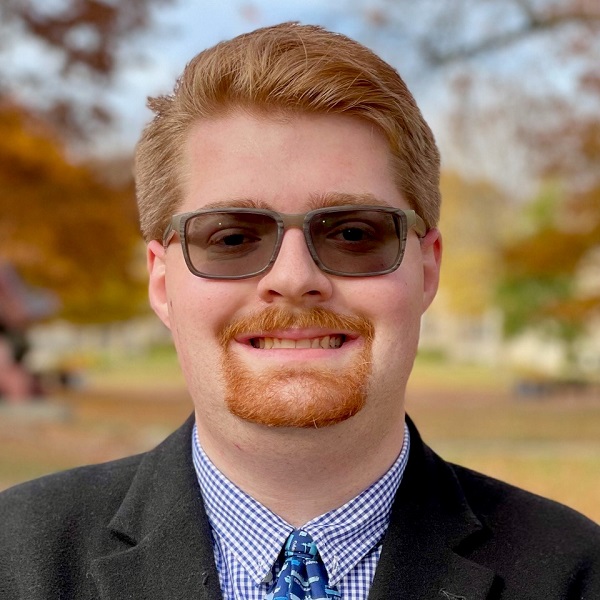
A Call to Lights, Camera, and Action: How Hollywood Woke America to the Nazi Threat

Name: Jackson Stuff
Majors: History, Education
Advisor: Madonna Hettinger
This thesis examines the evolution of anti-Nazi and pro-Intervention narratives from Hollywood films released between 1939 and 1941, while America was still neutral during World War II. Further, this thesis analyzes how these narratives and the films they were presented in were received by American audiences. For instance, the first anti-Nazi film, Confessions of A Nazi Spy, which was a bold condemnation of Nazis at home and abroad, was a failure amongst audiences. However, two years later audiences fell in love with A Yank In The R.A.F., a brazen piece of pro-Intervention and Anglo-American propaganda. This paper seeks to understand how Hollywood was able to dramatically shift these audiences’ attitudes in a two-year time span with the films they made and released.
Posted in Comments Enabled, Independent Study, Symposium 2022 on April 26, 2022.
8 responses to “A Call to Lights, Camera, and Action: How Hollywood Woke America to the Nazi Threat”
Related Posts
Related Areas of Study
History
Critically examine events and societies of the past and learn to tell the stories future generations need to know
Major MinorEducation
Graduate as a licensed teacher in pre-K-12 in fields ranging from science to music education
Major Minor Teaching Licensure


Hey Jackson! This is fascinating!! I think it’s awesome when pop culture can be used to learn about social, political, and sociopolitical attitudes at a given time like this. Spectacular job!! Also, Captain America at the end “put a smile on my face.” 😀
Fantastic work, Jackson! I found the comedies of 1940 and 1941 exceptionally interesting. It is incredible what power humor, especially in media, can hold in seamlessly conveying a message.
Thanks Dante, I am glad you enjoyed my topic and my angle. I firmly believe pop culture of any decade or century is one of the most ideal ways to examine sociopolitical attitudes of that particular era. Because those stories are what the people relate to and give a strong indication of their true feelings on issues.
Thanks Matt for your appreciation for my comedy chapter. The Three Stooges work in comedic shorts meant that most political censors ignored them because they did not view shorts as “high quality”. So that allowed the Stooges to go right after Hitler and make such a strong impression on early 1940 America. Also speaking of the influence of comedy. American Isolationists and Germany itself were very well aware of the influence of Charlie Chaplin and both groups worked heavily against him while he made “The Great Dictator”.
Sure thing! I completely agree!
A very interesting topic, Jackson! I’m delighted that you’ve continued to think about visual and material cultures. Congratulations on this great conclusion to your senior year – your future students will be lucky to have you!
Excellent work combining interesting and informative material. Congratulations!
I agree that your students will be lucky to have you!
I found your topic interesting, but I did notice that you didn’t examine a number of the many (sometimes B quality) anti-Fascist espionage-laden British films that were produced in the 1930s and early 1940s — often starring American actors/actresses — and their influence, which was significant in warning Americans of impending dangers. Some titles: “Sabotage” (1936); “Clouds Over Europe” (1939); “Night Train to Munich” (1940). Then, of course, you can’t forget Warner Bros.’ “Casablanca” (1942) – the rousing anti-Nazi film (besides the underlying romantic back story of Rick and Ilsa’s idyllic time in Paris before the German occupation) — particularly the drowning out of the Nazis by La Marsellaise. Perhaps the American classic was after your time frame, as the war was already in progress. You did include “Foreign Correspondent” (1940), but seem to have overlooked the many other British films that appeared on American silver screens. So I’m wondering why you limited your scope and examined only a handful of titles.